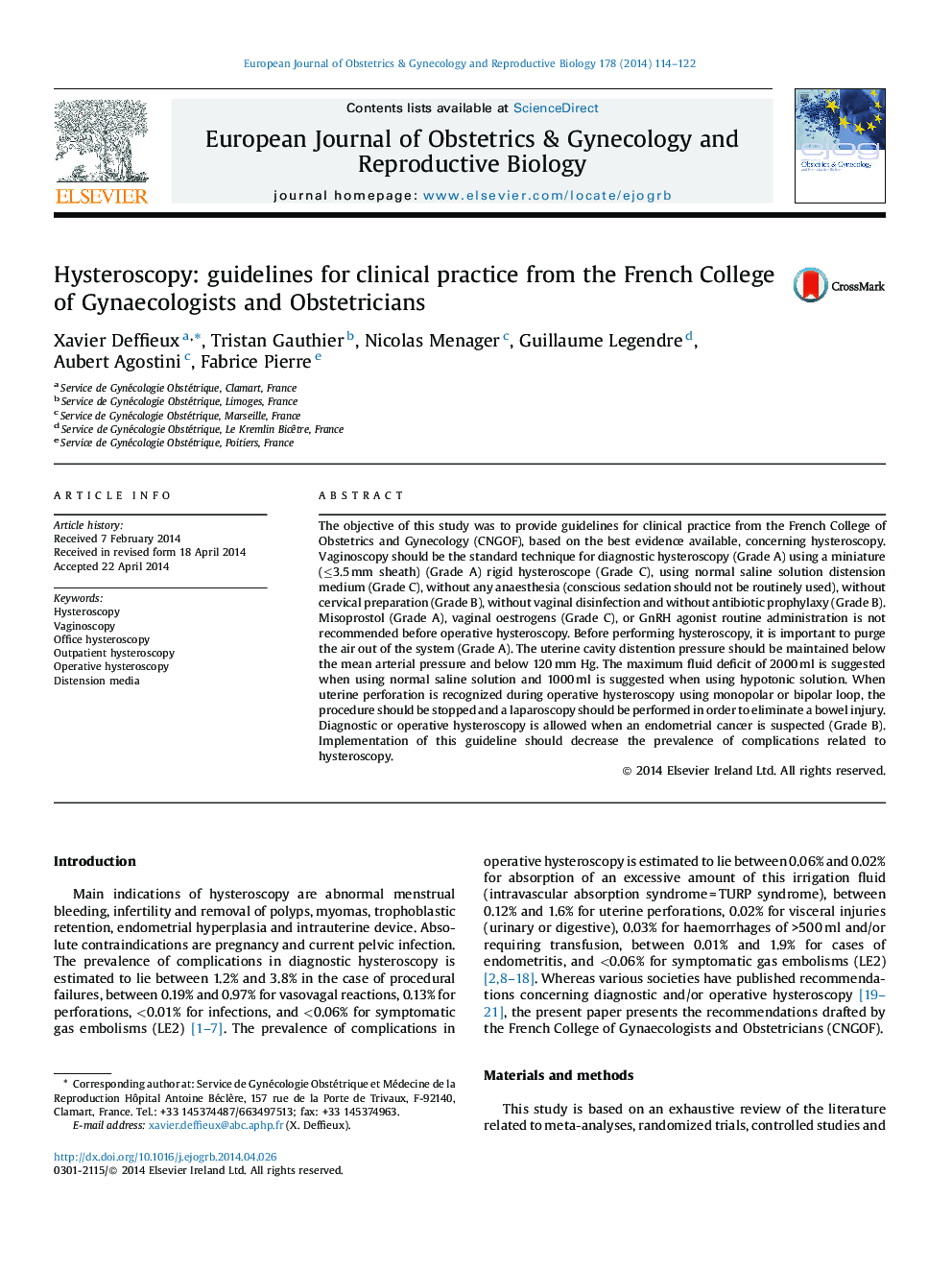| Article ID | Journal | Published Year | Pages | File Type |
|---|---|---|---|---|
| 6173702 | European Journal of Obstetrics & Gynecology and Reproductive Biology | 2014 | 9 Pages |
The objective of this study was to provide guidelines for clinical practice from the French College of Obstetrics and Gynecology (CNGOF), based on the best evidence available, concerning hysteroscopy. Vaginoscopy should be the standard technique for diagnostic hysteroscopy (Grade A) using a miniature (â¤3.5 mm sheath) (Grade A) rigid hysteroscope (Grade C), using normal saline solution distension medium (Grade C), without any anaesthesia (conscious sedation should not be routinely used), without cervical preparation (Grade B), without vaginal disinfection and without antibiotic prophylaxy (Grade B). Misoprostol (Grade A), vaginal oestrogens (Grade C), or GnRH agonist routine administration is not recommended before operative hysteroscopy. Before performing hysteroscopy, it is important to purge the air out of the system (Grade A). The uterine cavity distention pressure should be maintained below the mean arterial pressure and below 120 mm Hg. The maximum fluid deficit of 2000 ml is suggested when using normal saline solution and 1000 ml is suggested when using hypotonic solution. When uterine perforation is recognized during operative hysteroscopy using monopolar or bipolar loop, the procedure should be stopped and a laparoscopy should be performed in order to eliminate a bowel injury. Diagnostic or operative hysteroscopy is allowed when an endometrial cancer is suspected (Grade B). Implementation of this guideline should decrease the prevalence of complications related to hysteroscopy.
